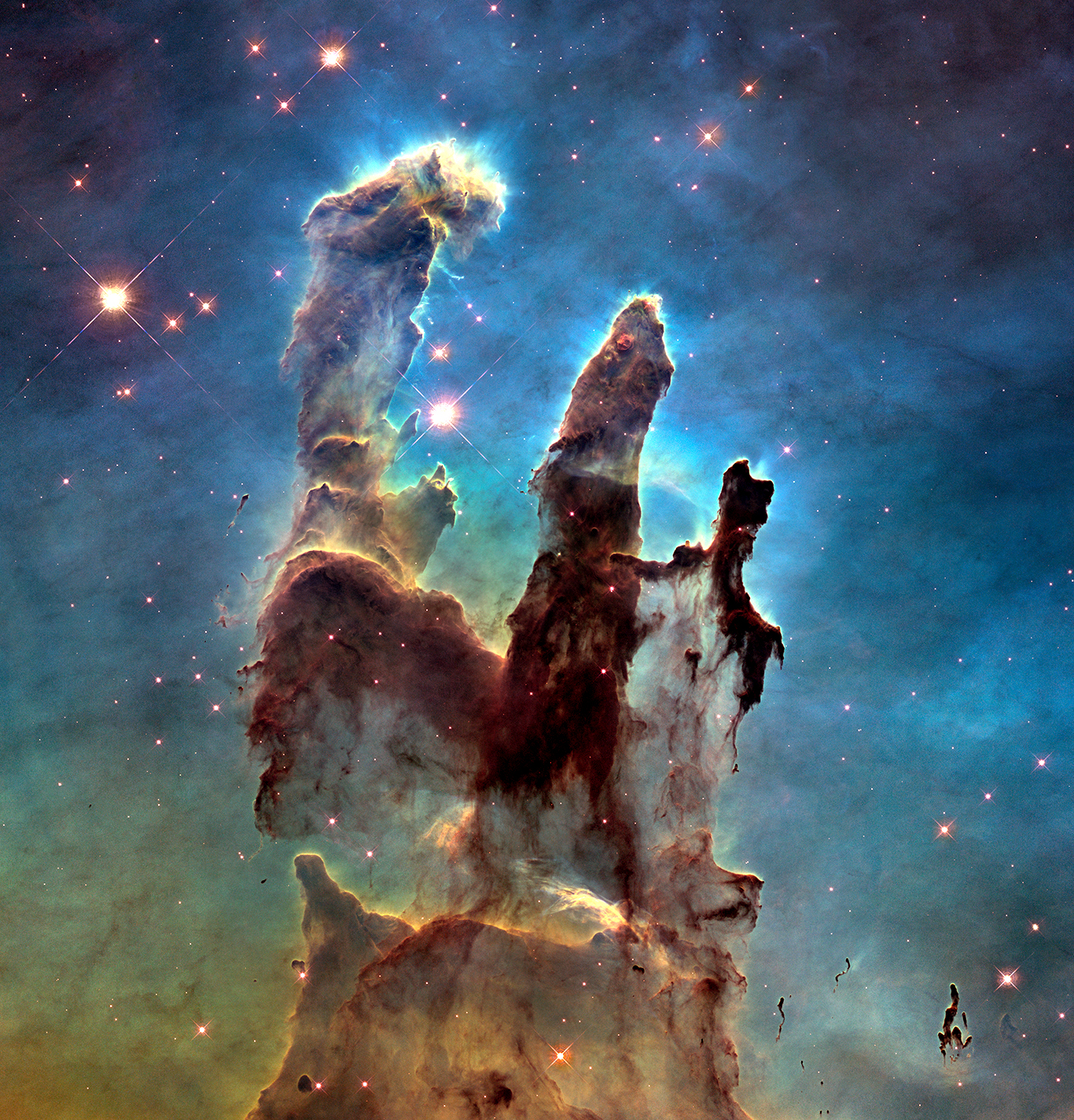Pillars of Creation
Pillars of Creation, 2022 (credit: JWST/NASA)
The Pillars of Creation was one of the most iconic images captured by the Hubble space telescope. The 4-5 light-year tall towers of gas and dust clouds lie within the larger Eagle Nebula. They represent a stellar "nursery" where new stars are being born.
According to NASA, the blue colors in the pillars represent oxygen; red is sulfur; and green represents both nitrogen and hydrogen. The mega-structures are bathed in scorching ultraviolet light produced by a cluster of young stars which over time degrades the clouds. The young stars are located just outside of the Hubble image. Now its successor, the James Webb space telescope (JWST) has peering into the Eagle nebula again with its infrared cameras to see how the pillars appear with the telescopes infrared cameras which show even great detail of the massive towers.
Here are images from both space observatories for comparison. WHB

Pillars of Creation, 2018 (credit: Hubble/NASA)